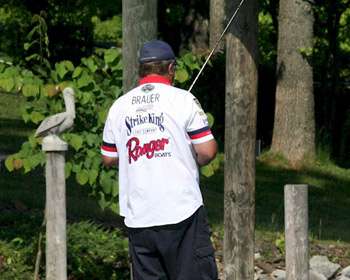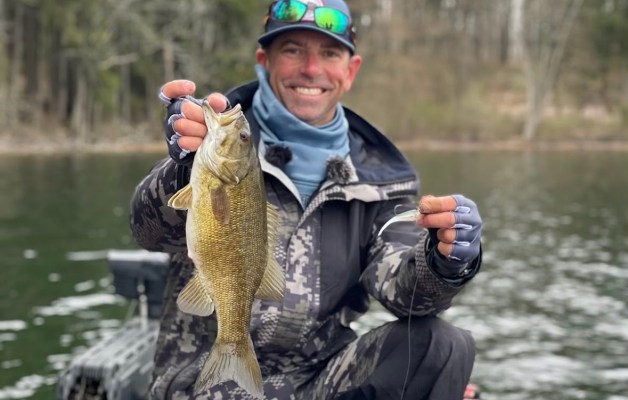
If you're new to bass fishing, it might be hard to imagine a time when 7-foot rods with straight, cork-wrapped handles were unheard of. Or when pistol-grip reel seats and interchangeable handles were once considered "high tech."
But to Elite Series veteran Denny Brauer, those days are still fresh in his mind. "When I first started fishing, about the only things readily available were pistol-grip rods," he allows. "They were really comfortable to fish, in my opinion, but you really have to consider the length of the rods back then beyond the grip."
That is, most rods were only 5 or 5 1/2 feet long. The "back then" that Denny refers to isn't really that long ago. In fact, it was the mid-1970s when a California hot shot named Dee Thomas won a BASS event at Bull Shoals, Ark., on an unheard of technique called flipping.
Prior to that, a "long rod" was 6 feet. "When flipping came into play in the mid-'70s, you started seeing longer rods," Brauer explains. "Oddly, you still weren't seeing many that were made with a straight grip — they still had the pistol grip. People started to see the benefit of longer rods and the leverage they provided, which really made the pistol grip obsolete because you had to have your hands on the grip in order to be effective."
Before the advent of the straight handle, however, an angler used to be able to unscrew the rod from the grip, thus making them interchangeable. Shortly thereafter, anglers and manufacturers alike began to recognize the benefits of having a solid rod/handle marriage. "That's when things really started to happen," Brauer explains. "We quickly went from composite grips to the cork that you see nowadays, and you went from a screw-in rod blank to a one-piece blank that went all the way through the handle."
Looking back, Denny can't help but appreciate the nostalgia of yesteryear, but that's not to say that he would trade places with where technology has taken the sport. "We've certainly come a long, long way since then," he points out.
"American Rodsmiths, for instance, now actually has graphite strips imbedded into the handle to increase the feel. The manufacturers have really done a lot of research into ways to lighten the rod and increase its sensitivity, which transmits directly into the rod's handle," he notes.
While shorter rod grips might still have a certain place in any angler's rod box, there might be no better way to illustrate the importance of longer handles than in Brauer's preferred techniques: flipping and pitching.
"I don't think anyone has enough wrist strength to flip with one hand and keep a big fish from pulling the rod down," Brauer explains. The advent of longer rods and handles boiled down to basically one thing, leverage.
Brauer says you have to have an "anchor point" when fighting fish. This is a place on your body where you dig the butt of the rod into to keep the fish from jerking the rod out of position. "I don't care how big the bass is, I'm going to be able to horse him out of whatever cover he's in because of the leverage a longer handle provides and that anchor spot."
The Missouri pro points out that while longer rod handles have become the gold standard for contemporary anglers, it is possible to reach overkill where length is concerned. "You can have too long of a handle," he says. "Everyone needs to find a rod that fits him best."
And don't take it upon yourself to lighten a rod's weight by "carving around on the handle" so much that it becomes tip-heavy, he warns. If your flipping stick is tip-heavy, you're likely to develop tennis elbow in time. You want it to be as balanced as possible.
(Provided by Z3 Media)




